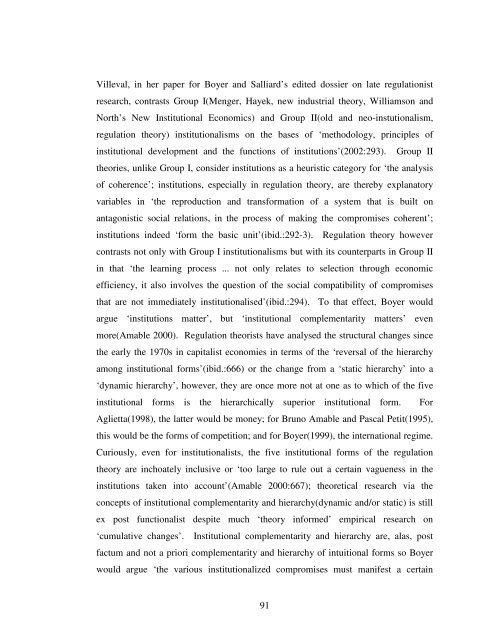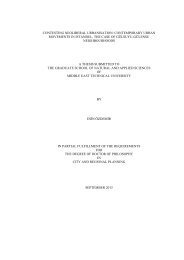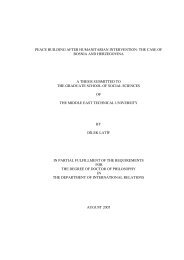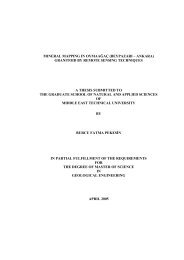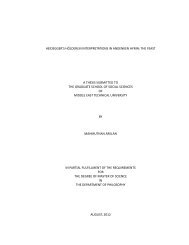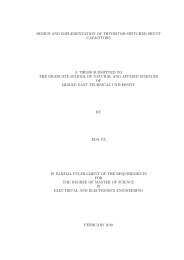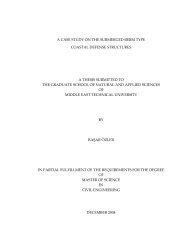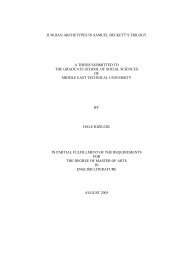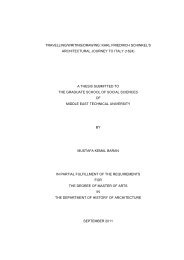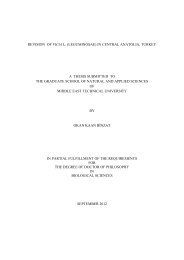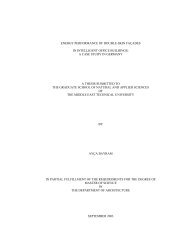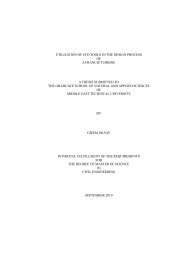View Original - Middle East Technical University
View Original - Middle East Technical University
View Original - Middle East Technical University
Create successful ePaper yourself
Turn your PDF publications into a flip-book with our unique Google optimized e-Paper software.
Villeval, in her paper for Boyer and Salliard’s edited dossier on late regulationist<br />
research, contrasts Group I(Menger, Hayek, new industrial theory, Williamson and<br />
North’s New Institutional Economics) and Group II(old and neo-instutionalism,<br />
regulation theory) institutionalisms on the bases of ‘methodology, principles of<br />
institutional development and the functions of institutions’(2002:293). Group II<br />
theories, unlike Group I, consider institutions as a heuristic category for ‘the analysis<br />
of coherence’; institutions, especially in regulation theory, are thereby explanatory<br />
variables in ‘the reproduction and transformation of a system that is built on<br />
antagonistic social relations, in the process of making the compromises coherent’;<br />
institutions indeed ‘form the basic unit’(ibid.:292-3). Regulation theory however<br />
contrasts not only with Group I institutionalisms but with its counterparts in Group II<br />
in that ‘the learning process ... not only relates to selection through economic<br />
efficiency, it also involves the question of the social compatibility of compromises<br />
that are not immediately institutionalised’(ibid.:294). To that effect, Boyer would<br />
argue ‘institutions matter’, but ‘institutional complementarity matters’ even<br />
more(Amable 2000). Regulation theorists have analysed the structural changes since<br />
the early the 1970s in capitalist economies in terms of the ‘reversal of the hierarchy<br />
among institutional forms’(ibid.:666) or the change from a ‘static hierarchy’ into a<br />
‘dynamic hierarchy’, however, they are once more not at one as to which of the five<br />
institutional forms is the hierarchically superior institutional form. For<br />
Aglietta(1998), the latter would be money; for Bruno Amable and Pascal Petit(1995),<br />
this would be the forms of competition; and for Boyer(1999), the international regime.<br />
Curiously, even for institutionalists, the five institutional forms of the regulation<br />
theory are inchoately inclusive or ‘too large to rule out a certain vagueness in the<br />
institutions taken into account’(Amable 2000:667); theoretical research via the<br />
concepts of institutional complementarity and hierarchy(dynamic and/or static) is still<br />
ex post functionalist despite much ‘theory informed’ empirical research on<br />
‘cumulative changes’. Institutional complementarity and hierarchy are, alas, post<br />
factum and not a priori complementarity and hierarchy of intuitional forms so Boyer<br />
would argue ‘the various institutionalized compromises must manifest a certain<br />
91


